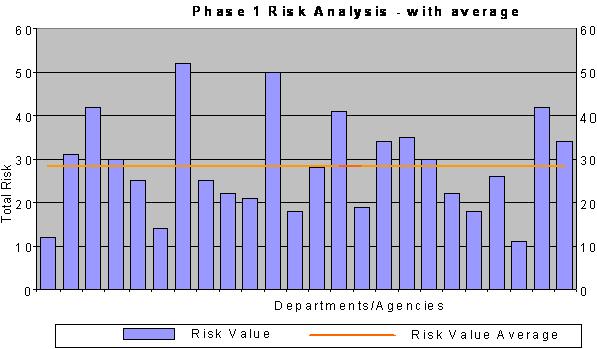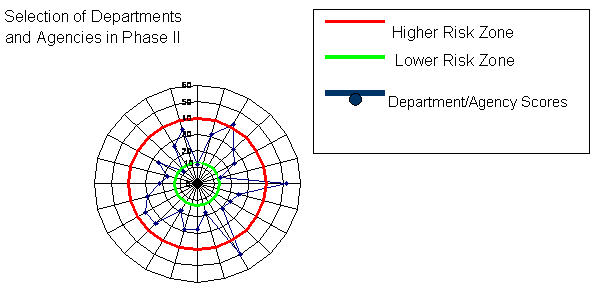Common menu bar links
Breadcrumb Trail
ARCHIVED - Horizontal Internal Audit: Delegation of Financial Authorities in Large Departments and Agencies
 This page has been archived.
This page has been archived.
Archived Content
Information identified as archived on the Web is for reference, research or recordkeeping purposes. It has not been altered or updated after the date of archiving. Web pages that are archived on the Web are not subject to the Government of Canada Web Standards. As per the Communications Policy of the Government of Canada, you can request alternate formats on the "Contact Us" page.
Audit Approach
The chart below illustrates a summary of the key aspects concerning the two phases of the audit.

Summary of the key aspects concerning the two phases of the audit - Text version
The audit objectives and criteria were based on principles drawn from the Treasury Board Policy on Delegation of Authorities as well as from the Management Accountability Framework (MAF) elements of Accountability and Stewardship. To assess the reliability and effectiveness of the delegation instruments, the following three central/overview objectives were identified2:
1) Authorities, responsibility and accountability instruments and policies are established and clearly communicated;
2) Delegation of financial authorities and applicable policies are reviewed regularly and revised as required; and,
3) Compliance with financial-management legislation, policies and authorities is monitored regularly.
In addition, the audit team endeavoured to identify best practices in the design and communication of the delegation of financial authorities.
Phase I
A set of 58 questions was developed and used to guide the conduct of Phase I of this audit. A numerical value was then assigned to each question's five possible answers as follows:
Meets ................. 0
Partially meets....... 1
Does not meet....... 2
Concern3.............. 5
Not applicable........ 0
Selected answers were converted to numerical values and added together as a means of measuring each participating department's/agency's respective level of risk. The higher a department's overall score, the more audit criteria were not met. Thus, higher scores represent relatively higher levels of risk.
During Phase I, review of the documents received from departments and agencies provided the basis for answering the 58 questions of the audit program. There was an ongoing exchange of information between the audit team and the 24 departments involved. These communications followed from the analysis of the documents received from the departments, and sought to either clarify issues or to obtain further information. A significant effort was made at this stage to provide departments every opportunity to respond to any issues identified by the auditors.
Given the mandate to conduct a horizontal internal audit, a great deal of attention was paid to analyzing and compiling the results by subject. The analysis of results by subject facilitated the identification and reporting of trends and observations that apply across all these organizations.
The following chart (See Figure 1) illustrates the extent of variance in levels of risk, as represented by defined criteria pertaining to delegated financial authorities and assigned scores across departments and agencies. Note that this analysis pertains to the delegation of financial authorities and does not represent an overall statement of relative risk for the departments and agencies involved.

Figure 1: Phase 1 Risk Analysis - text version
Although the audit found a general level of compliance (in that all departments and agencies had instruments in place to delegate financial authorities) the results indicated a high degree of variance in risk levels.
Phase II
Selection of departments and agencies: In Phase II, the onsite audit work conducted in the five selected organizations included visits to the departmental/agency headquarters, and, in all but one case, fieldwork in two regional offices. In this Phase, the audit team aimed to confirm the results of Phase I and to identify potential best practices.
Departmental/agency risk scores from Phase I are presented below in a "target" graph format. Using this approach, organizations having lower risk scores appear within the green inner circle (the lower risk zone); and, those with higher risk scores are depicted toward the outer limits of the graph, as indicated by the red outer circle (the higher risk zone).
The audit team selected the three participants from outside the red circle (i.e. LDAs appearing in the higher risk zone) and the two from within the green circle – those from which best practices might be drawn.

Selection of Departments and Agencies in Phase II - text version
Audit Approach: Phase II consisted of a detailed review of the Delegation of Financial Authorities in five large departments and provided a more in-depth view of the control framework. Through interviews and observation of transaction processing, the audit team analyzed the various management procedures and internal controls. The compilation of results by department and by key subject/review topic, contributed to a horizontal view. The review topics included the following:
- Internal controls over the authorization of transactions;
- Monitoring activities;
- Administration of specimen-signature records;
- Communication and training; and,
- Level of understanding of persons exercising delegated authorities.
